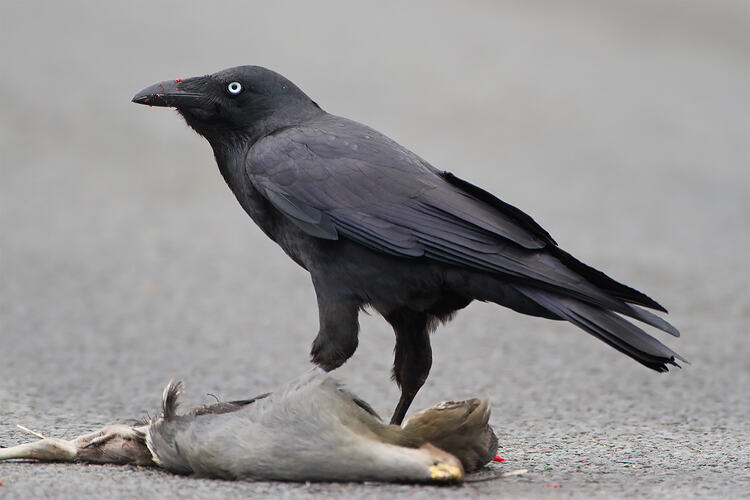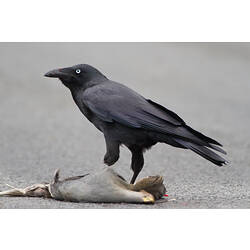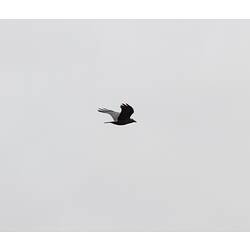General Description
The Forest Raven is a large and heavy corvid, almost completely black, with a large bill and short tail. It has a white eye-ring around the pupil. The bill is decurved (curved downwards), with a distinct hook at the tip.
Biology
The Forest Raven is sedentary, meaning it does not migrate. It can be found in non-breeding flocks of up to 100 birds in winter. The Forest Raven is omnivorous but tends to prefer flesh. It feeds mainly on insects, small lizards and birds and eggs. It also eats carrion (dead animals), including road kill. This species can cache (hide) surplus food. Breeding of the Forest Raven is poorly known. Only the female develops a brood-patch (a bare patch of skin to keep the nestlings and eggs warm). The male feeds the female on the nest. When the eggs hatch, the young are blind and naked. Both parents feed the young. The nest is large and made of sticks and twigs, lined with leaves, fur or feathers. The nest is usually high in the canopy of a tall tree.
Distribution
Tasmania and southern Victoria.
Habitat
Alpine forests, high moors, wet eucalypt forest, woodlands, coastal scrub and beaches and adjacent open country. It is also found in human-modified areas such as orchards and pine plantations.
More Information
-
Animal Type
-
Animal SubType
-
Brief Id
Large, almost completely black-coloured bird with a large downwards curving hooked bill.
-
Colours
Black
-
Maximum Size
54 cm
-
Habitats
-
Diet
Omnivore
-
Diet Categories
Insects, small vertebrates, Lizards, eggs, Carrion
-
Endemicity
-
Commercial
No
-
Conservation Statuses
CITES: Not listed, FFG Threatened List: Not listed, EPBC Act 1999: Not listed, IUCN Red List: Least Concern
-
Taxon Name
-
Common Name
Forest Raven
-
Kingdom
-
Phylum
-
Subphylum
-
Class
-
Order
-
Family
-
Genus
-
Species Name
tasmanicus



